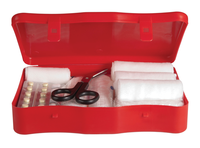First Aid
If you want to remove areas from a motif inconspicuously, then plugins like Resynthesizer and G'MIC can help by providing the right tools.
|

photka, 123RF
If you want to remove areas from a motif inconspicuously, then plugins like Resynthesizer and G'MIC can help by providing the right tools.
Frequently an image that otherwise looks good has a small flaw. The flaw can be dust on the lens, a car that drives unexpectedly into the frame, or a traffic sign that is inconveniently located. Inconspicuous removal of areas in images is one of the most frequent issues that arise. A good result depends on knowing the right tricks, having suitable plugins, and not needing to rely so heavily on the more archaic Eraser tool.
Because these problems occur often, you have an entire palette of options for removing troublesome areas as inconspicuously and seamlessly as possible. Gimp offers a series of tools, and special plugins expand these capabilities. The G'MIC plugin collection contains filters for editing out these types of problems.
The basic solution always involves the same approach: The editor responds by trying more or less to cover the problem part of the image automatically to create the impression of a homogeneous area. The simplest way to do this is with a Clone tool. Gimp has three of these, and they all work pretty much alike.
[...]
Pages: 5
GIMP by itself can already do a lot. With plugins, you can extend the free image editor with complex functions, most of which allow you to see the final results before you apply them.
Extracting objects from an image is one of the most important techniques for image editing that exists. Gimp offers an entire series of these tools to help you do this.
Elaborate video compositing, blue screen tricks, and other complex video effects normally only appear in high-priced programs like Adobe After Effects, Nuke, or Fusion. Natron is open source, free, and gives high-priced alternatives a run for their money.
All major desktop environments provide programs for taking screenshots; however, their features usually pale in comparison with those of Shutter.
Would you like to adorn your letterhead with an attractive Celtic knot? Drawing one by hand is a laborious task, but Knotter provides a variety of functions to get the job done in a matter of minutes.
© 2026 Linux New Media USA, LLC – Legal Notice